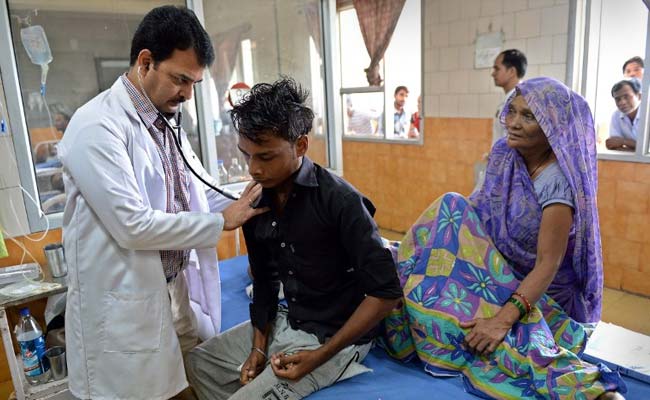
With Delhi in panic as the number of dengue cases continue to rise, the Indian Medical Association has issued a statement emphasising that platelet transfusions are not needed in most cases:
Here are important points from the statement:
It is a myth that all dengue patients require platelet transfusion. In fact unnecessary transfusion causes more harm and puts the patient at risk of complications. Transfusion must only be done if a person's platelet count is less than 10,000, and he has active bleeding.
Most dengue cases are preventable and manageable. The risk of complications is in less than 1 per cent of dengue cases and if the public knows warning signals, all deaths from dengue can be avoided.
It is also important to remember that platelet counts acquired by machine readings are not reliable, and a discrepancy of up to 40,000 can be found. Instead, the doctor must opt for a hematocrit test. Most dengue cases can be managed without testing by only measuring the difference between the upper and lower blood pressure. The pulse pressure should be kept over 40 mm Hg
Prevention is better than cure. Dengue mosquitoes only bite during the day and breed in clean, fresh water. Often people remain unaware of these facts and protect themselves from bites during the nights by using mosquito nets and repellent creams. They also feel that they are the safest when in clean urban environments, not realizing that mosquitoes could be breeding in the clean water filled bucket kept in their backyard.
The public must not pressurize the doctors to hospitalize patients whose illness can be managed at home. The beds should be made available for severe dengue patients instead.
The typical symptoms of dengue are fever, vomiting, headache, nausea, pain behind the eyes and severe joint and muscle pain. Most dengue virus infections in adults are symptomatic (86 per cent) and in children under the age of 15 years are asymptomatic or minimally symptomatic. Classic dengue fever is an acute febrile illness accompanied by a headache, retro-orbital pain, and marked muscle and joint pains.
Symptoms typically develop between four and seven days after the bite of an infected mosquito. The incubation period may range from three to 14 days. Fever typically lasts for five to seven days. The febrile period may also be followed by a period of marked fatigue that can last for days to weeks, especially in adults. Joint pain, body aches, and rash are more common in females.
Because a virus causes dengue fever, there is no specific medicine or antibiotic to treat it. For typical dengue fever, the treatment is directed toward relief of the symptoms. The acute phase of the illness with fever and myalgia lasts about one to two weeks.
In dengue, most complications occur within two days of the fever subsiding and most people are casual during this period. A doctor should attend to any abdominal pain, giddiness or weakness after the fever has subsided. Dengue complications during this period are due to a shift of blood volume and patients require a rapid infusion of oral or intravenous fluids in large quantities during this time.
If a person has suffered from dengue in the past year, they must take additional precautions to prevent the disease because a second attack of dengue may be more dangerous than the first attack. There are four different types of dengue, and one can, therefore, suffer from dengue four times in his or her lifetime. The second or subsequent dengue infections tend to be more serious. A person with dengue can also simultaneously suffer from malaria. Malaria and dengue together can lower platelet counts to a dangerous level leading to complications.

